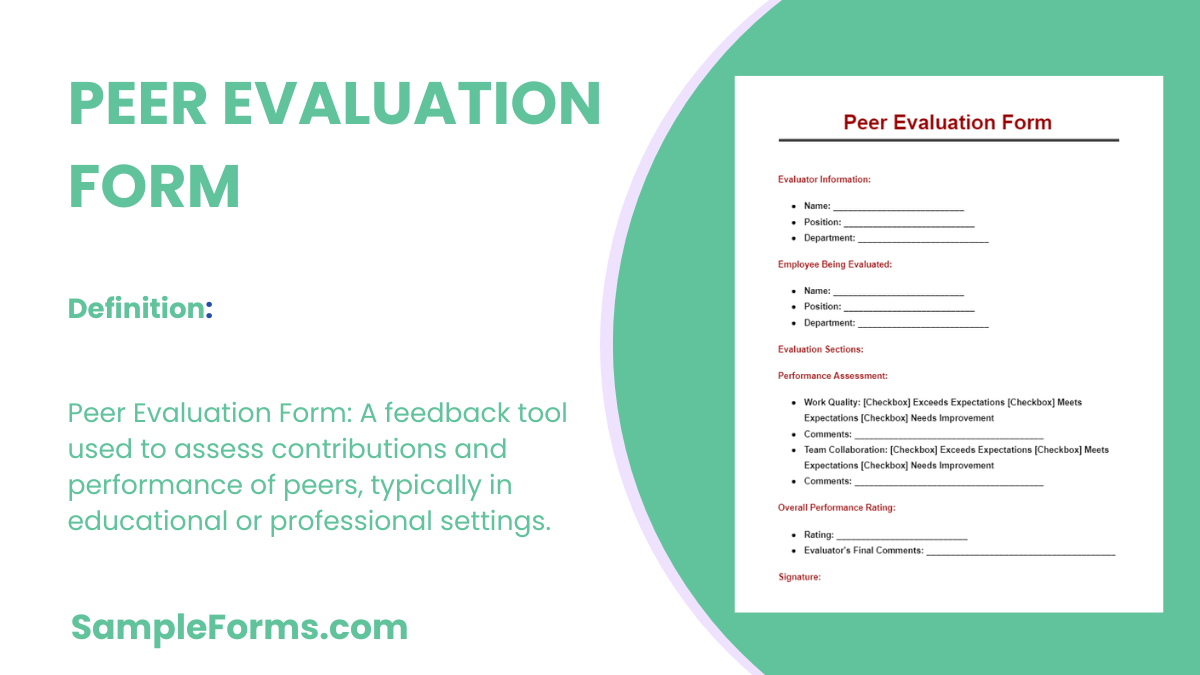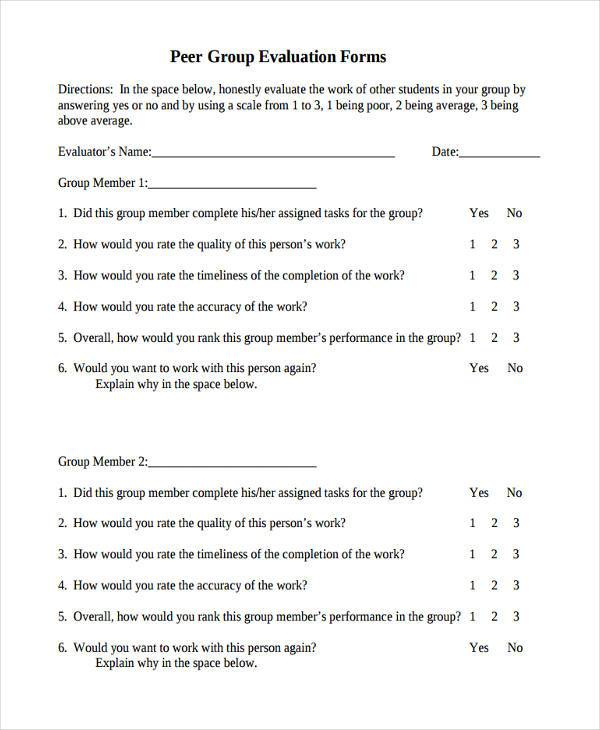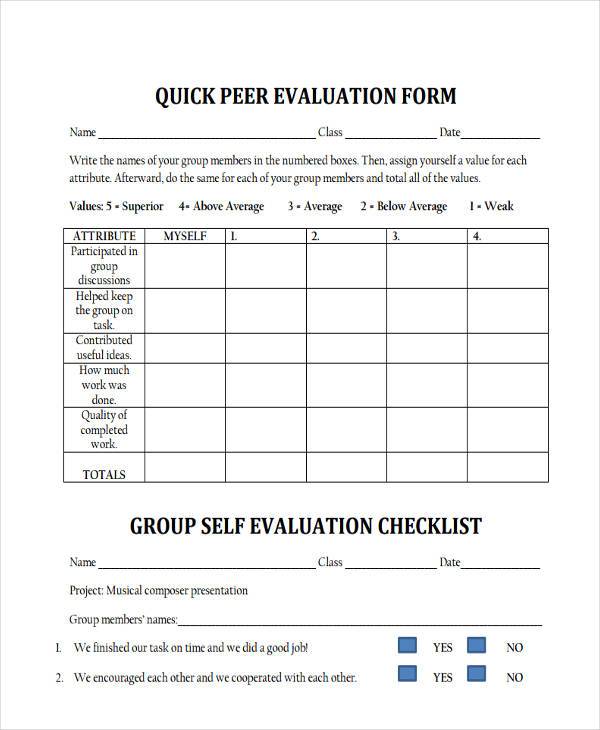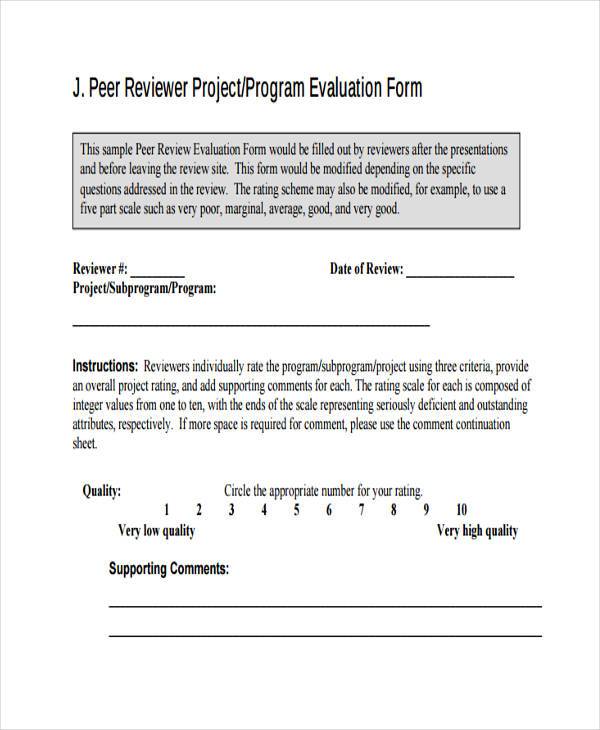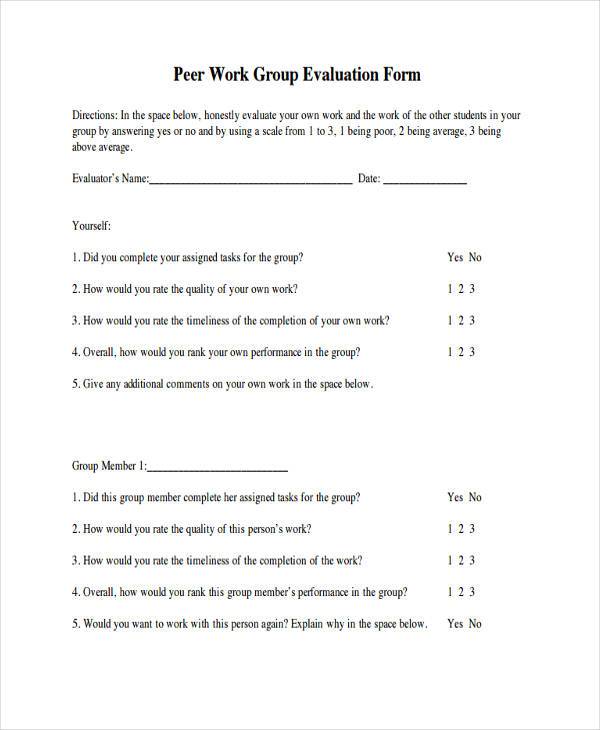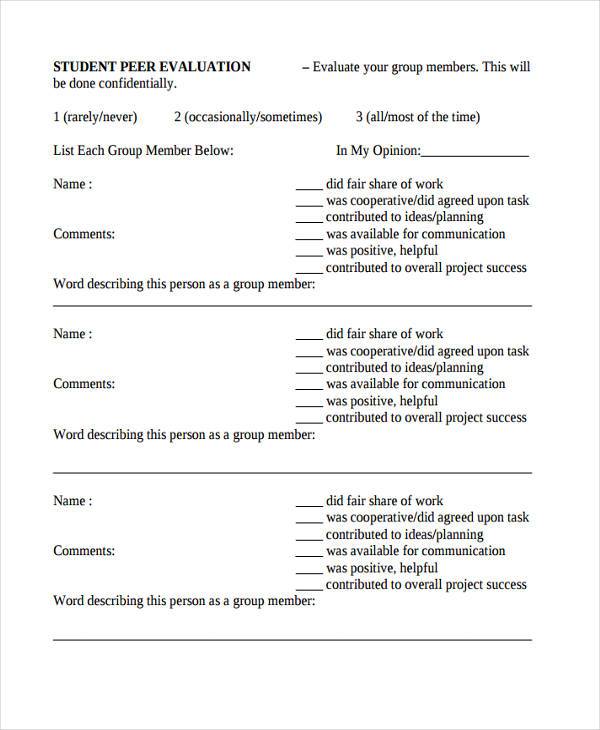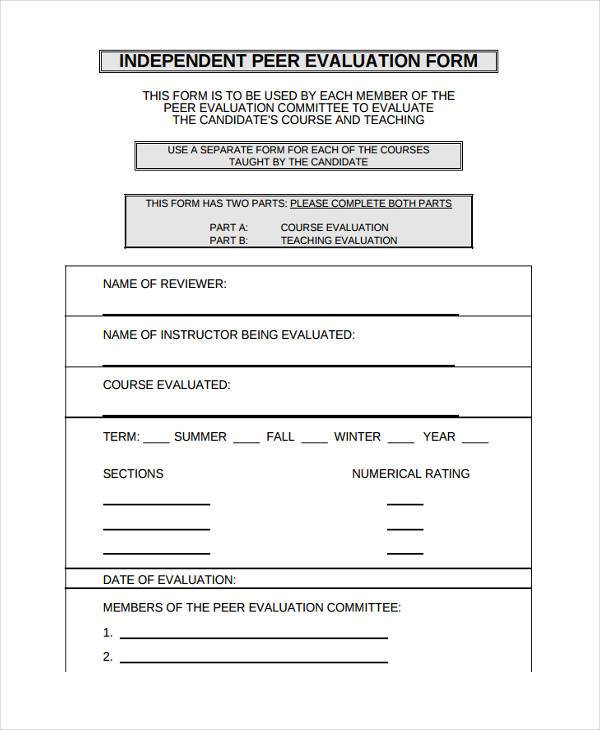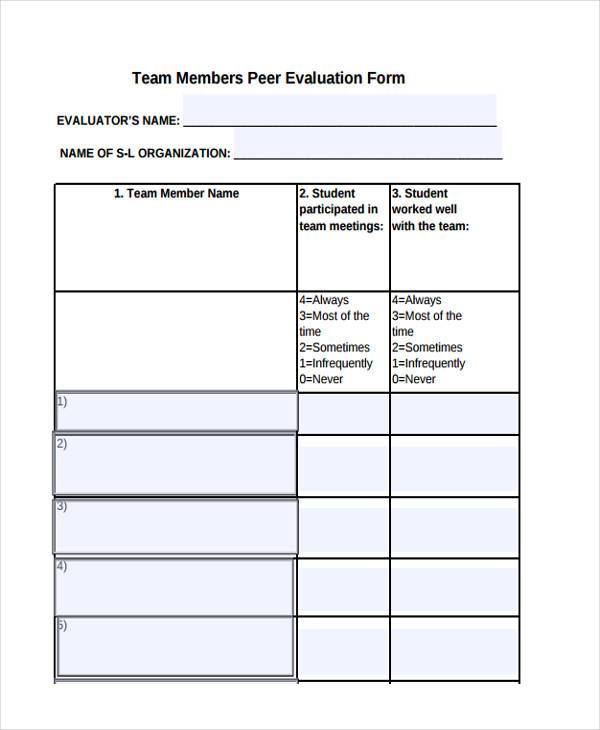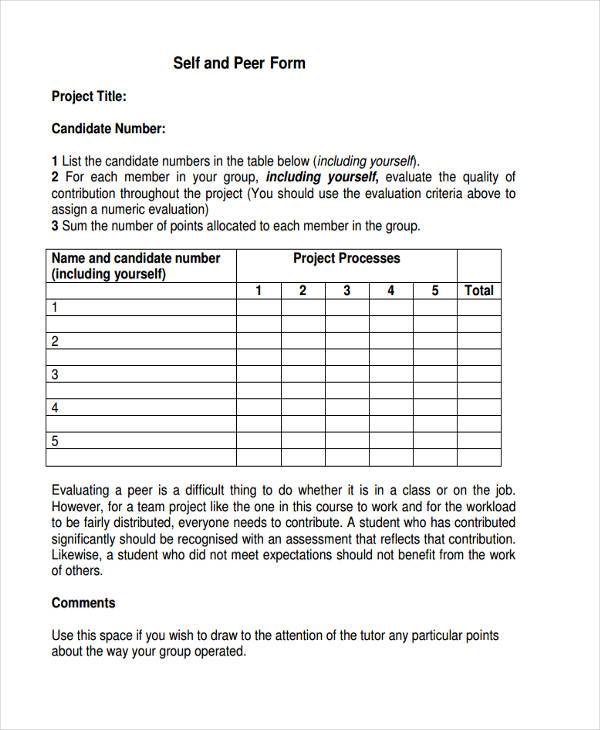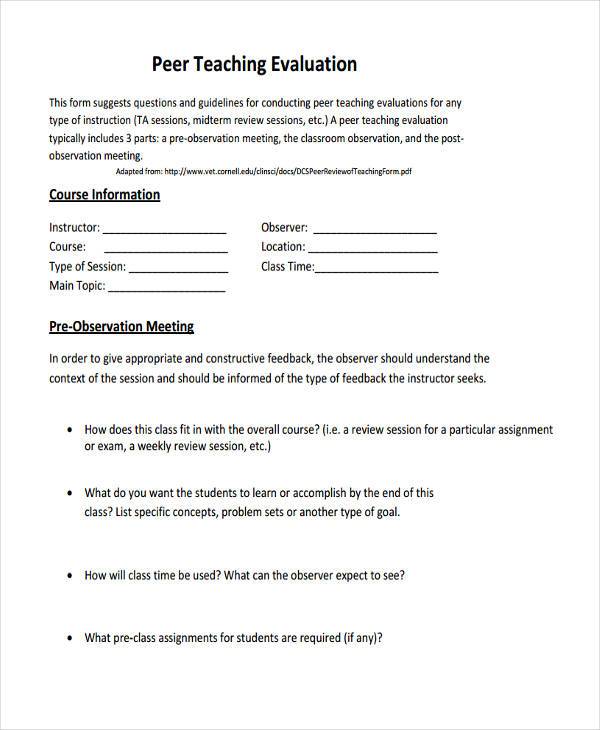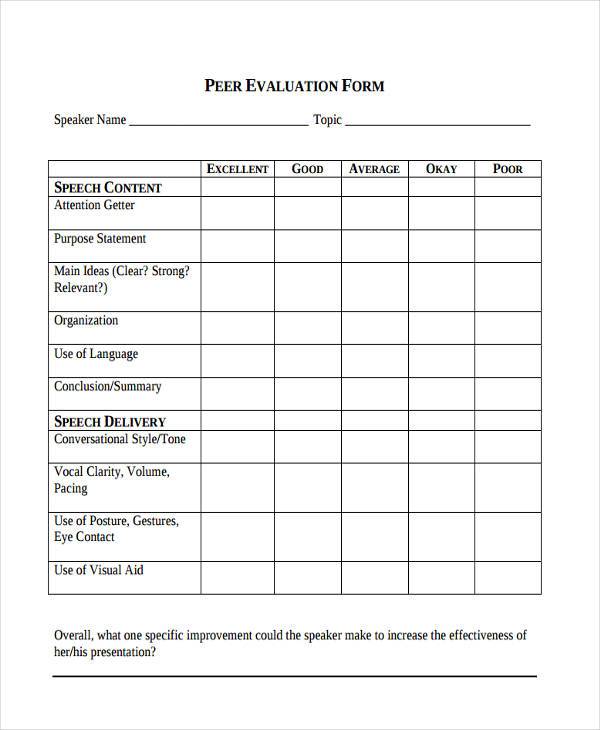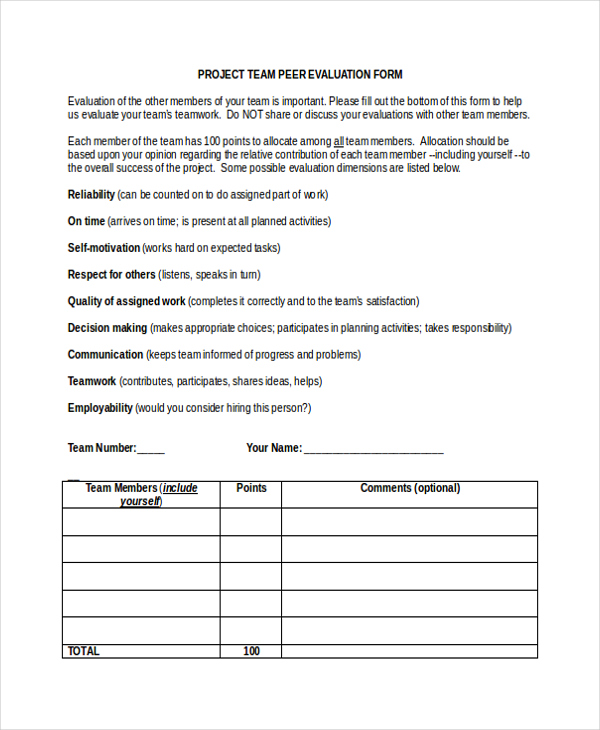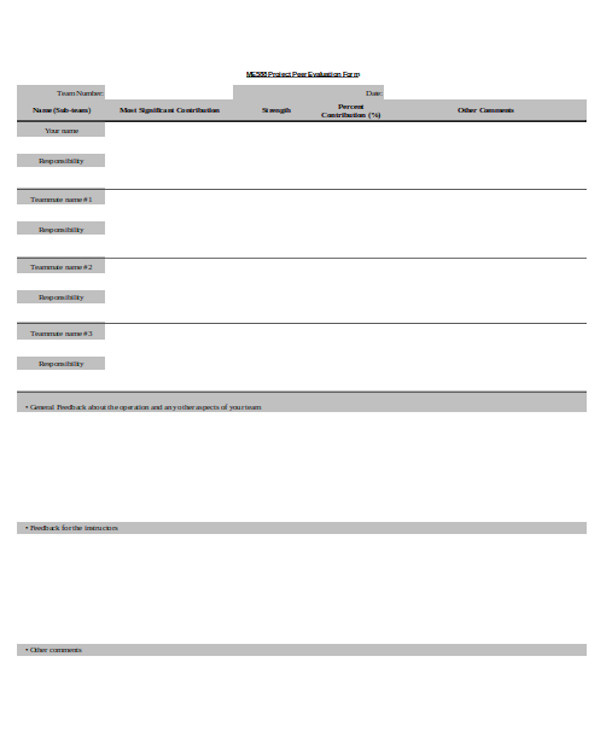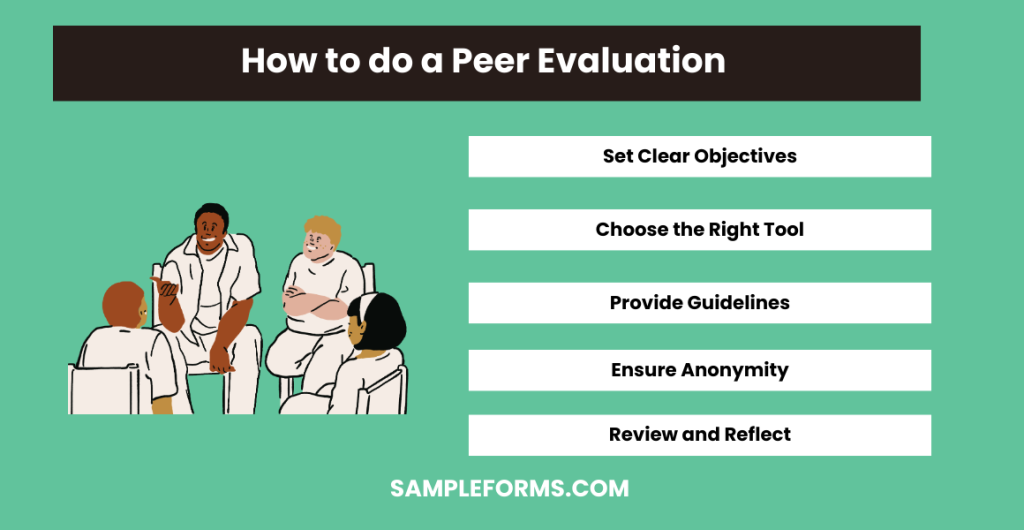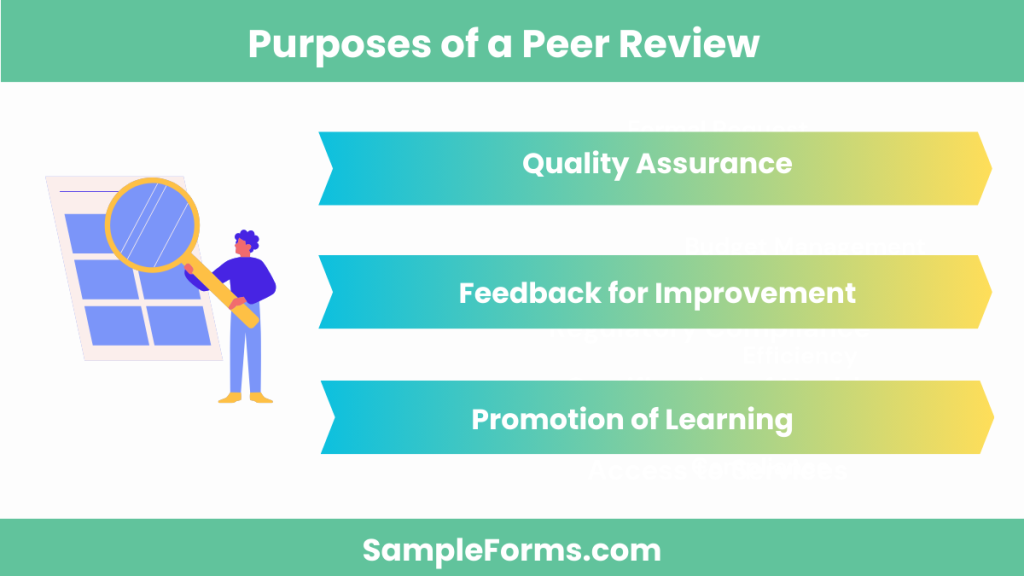A peer evaluation form is a vital tool used in educational and professional settings to assess and enhance group dynamics, individual performance, and overall productivity. These forms allow participants to provide feedback on each other’s contributions, strengths, and areas for improvement. Incorporating both an Evaluation Form and a Self-Evaluation Form can significantly aid in self-reflection and foster a proactive approach to personal development. By systematically collecting insights from peers, these forms help ensure a balanced and comprehensive view of each participant’s skills and behaviors, making them invaluable for ongoing development and team synergy.
Download Peer Evaluation Form Bundle
What is a Peer Evaluation Form?
A peer evaluation form is a structured document used by individuals within a group to assess each other’s performance, contributions, and teamwork skills. It typically includes criteria and scales for rating aspects such as cooperation, reliability, communication, and professional competence. The main purpose of the form is to gather constructive feedback from peers, which can be used to improve individual and group effectiveness. By enabling honest assessments, these forms foster a culture of continuous improvement and accountability within teams.
Peer Evaluation Format
Evaluator Information:
- Name:
- Position:
- Department:
Employee Being Evaluated:
- Name:
- Position:
- Department:
Evaluation Criteria:
- Teamwork and Cooperation: Rate and provide examples.
- Quality of Work: Rate and provide specific examples.
- Initiative and Innovation: Discuss instances where the employee displayed initiative.
- Reliability and Punctuality: Evaluate the employee’s reliability and timeliness.
Overall Assessment:
- Strengths: List the major strengths of the employee.
- Areas for Improvement: Suggest areas where the employee could improve.
Recommendations for Professional Development:
- Suggestions: Offer suggestions for future training and development.
Evaluator’s Signature:
- Signature:
- Date:
Peer Evaluation Form PDF
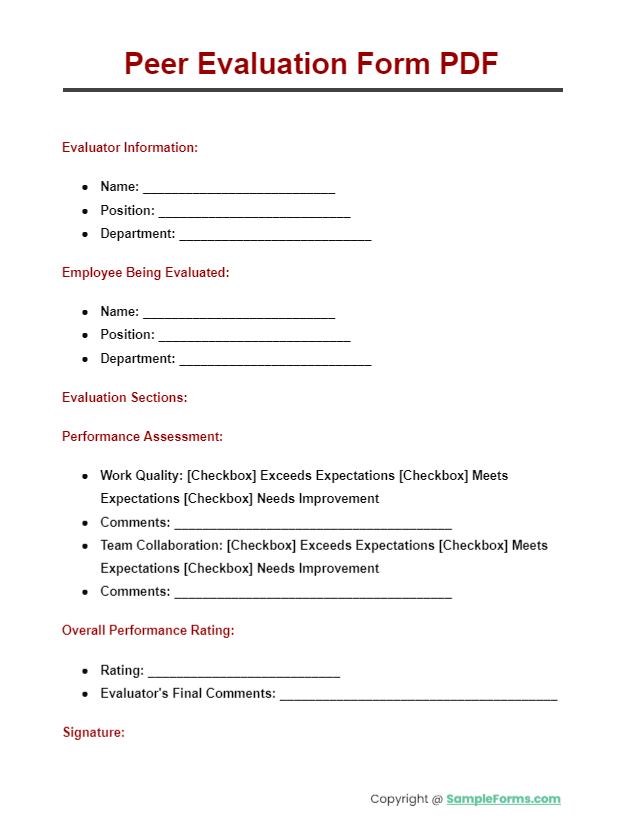
Explore our downloadable Peer Evaluation Form PDF, a structured tool to guide effective peer assessments, enhancing accuracy and accountability across team evaluations. Performance Evaluation Form
Peer Evaluation Form for Students
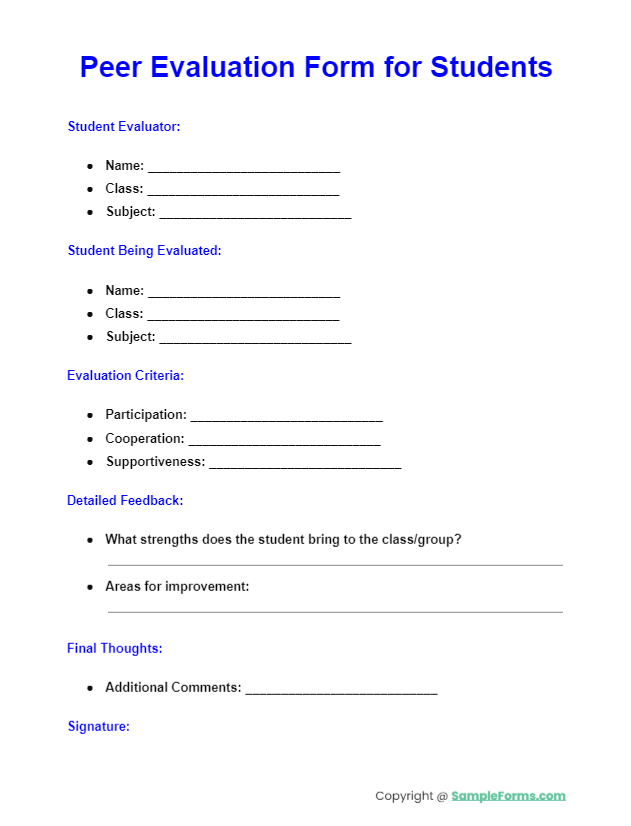
The Peer Evaluation Form for Students facilitates feedback among students, crucial for developing skills and improving group project outcomes, integrating elements of a Training Evaluation Form.
Peer Evaluation Form for Group Work
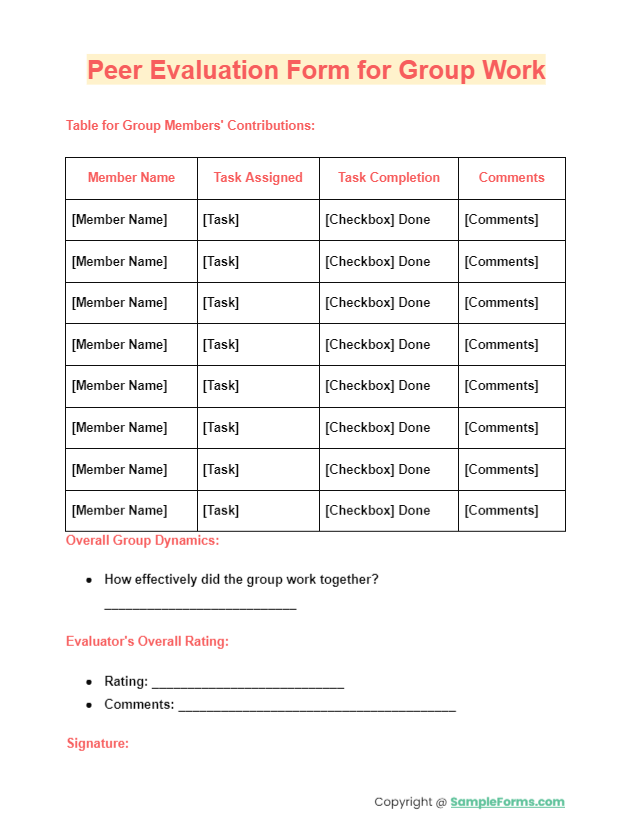
Optimize team collaboration with our Peer Evaluation Form for Group Work, designed to assess dynamics and effectiveness, incorporating aspects of a Call Monitoring Evaluation Form.
Peer Evaluation Form for Teachers
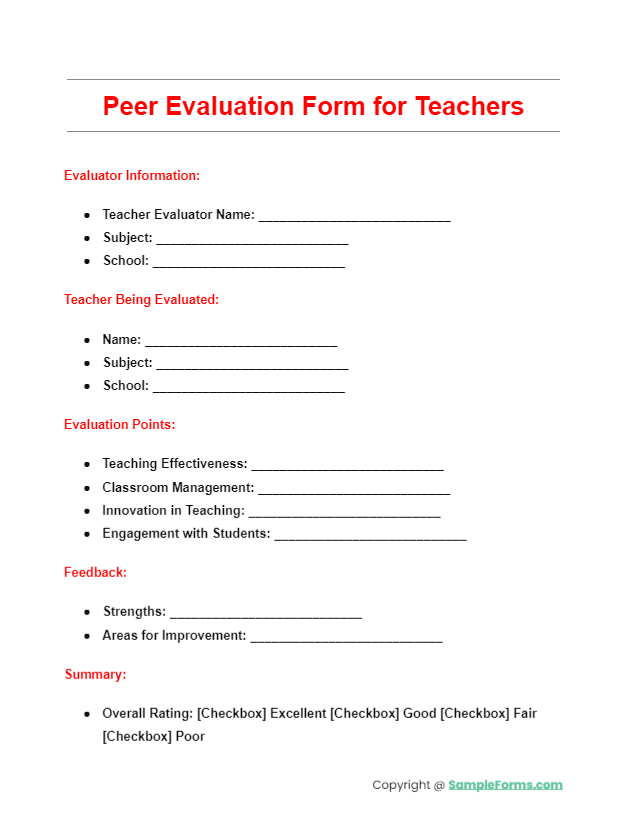
Enhance teaching strategies with our Peer Evaluation Form for Teachers, a reflective tool for professional growth, merging concepts from the Employee Self Evaluation Form and Employee Evaluation Form.
Peer Evaluation Form For Work
Quick Peer Evaluation Form
Peer Project Review Evaluation Form Example
Peer Work Group Evaluation Form
Student Peer Evaluation Form Example
Independent Peer Evaluation Form
Team Member Peer Evaluation Form
Self & Peer Evaluation Form Sample
Peer Powerpoint Evaluation Form
Peer Teaching Evaluation Form Example
Peer Evaluation Form
Project Team Peer Evaluation Form
Project Peer Evaluation Form
How to do a peer evaluation?
Conducting a peer evaluation effectively requires a structured approach to ensure fairness and objectivity, akin to a Speech Evaluation Form.
- Set Clear Objectives: Define what you aim to achieve.
- Choose the Right Tool: Use a comprehensive peer evaluation form.
- Provide Guidelines: Clearly explain the evaluation process.
- Ensure Anonymity: Keep responses confidential to ensure honest feedback.
- Review and Reflect: Analyze the feedback for continuous improvement. You may also see Course Evaluation Form
What do you write in a peer evaluation?
Writing in a peer evaluation involves giving constructive feedback, similar to what you’d include in a Supplier Evaluation Form.
- Specific Examples: Provide clear instances of behavior.
- Balanced Feedback: Highlight strengths and areas for improvement.
- Professional Tone: Keep the feedback respectful and professional.
- Actionable Suggestions: Offer practical advice for development.
- Encouragement: Motivate with positive reinforcement. You may also see Teacher Evaluation Form
What are the three types of peer assessment?
Peer assessment varies in type to suit different educational or workplace contexts, much like a Nurse Evaluation Form.
- Formative Assessment: Provides ongoing feedback during the learning phase.
- Summative Assessment: Evaluates performance at the end of a project or term.
- Informal Assessment: Offers more casual, real-time feedback. You may also see Workshop Evaluation Form
What are the 5 key elements of peer review?
The effectiveness of peer review hinges on several critical elements, comparable to a Debate Evaluation Form.
- Transparency: Ensure the criteria and process are clear to everyone.
- Fairness: Apply the same standards to all participants.
- Expertise: Reviewers should be knowledgeable about the content.
- Confidentiality: Protect the identity and contributions of participants.
- Constructive Feedback: Focus on providing helpful, actionable feedback. You may also see Sales Evaluation Form
What are the three main purposes of a peer review?
The main purposes of peer review mirror the objectives of an Internship Evaluation Form.
- Quality Assurance: Ensure the work meets the required standards.
- Feedback for Improvement: Provide insights for enhancing performance.
- Promotion of Learning: Encourage continuous personal and professional development. You may also see Candidate Evaluation Form
What happens during peer review?
During peer review, participants engage in a detailed analysis of work, similar to reviewing a Food Evaluation Form.
- Submission Review: Participants submit their work for evaluation.
- Feedback Collection: Collect detailed and structured feedback from peers. You may also see Bid Evaluation Form
- Analysis: Analyze feedback for trends and actionable insights.
- Discussion: Engage in discussions to clarify and debate feedback points.
- Revision: Implement changes based on the feedback received. You may also see Seminar Evaluation Form
What are the disadvantages of peer assessment?
While beneficial, peer assessment comes with challenges, akin to those found when using a Functional Capacity Evaluation Form.
- Bias Risk: Personal biases can influence feedback. You may also see Proposal Evaluation Form
- Varied Expertise: Differences in skill levels can affect the quality of evaluations.
- Pressure: May cause stress or conflict among peers.
- Time-Consuming: Can require significant time to conduct effectively.
- Lack of Training: Without proper guidance, the feedback may not be useful. You may also see Trainee Evaluation Form
What does peer assessment look like?
Peer assessment typically involves reviewing contributions or work using structured criteria, similar to a Lecture Evaluation Form. Participants rate and provide feedback to their peers to enhance learning and performance. You may also see Activity Evaluation Form
Is peer review the same as peer evaluation?
Yes, peer review and peer evaluation generally refer to the same process of assessing work, often used interchangeably in contexts similar to a Book Evaluation Form.
Does peer evaluation include yourself?
Peer evaluation can include self-assessment, enabling individuals to compare their self-review with feedback from others, much like in a Class Evaluation Form.
What is the most common peer review process?
The most common peer review process involves reviewers anonymously evaluating others’ work to ensure unbiased feedback, akin to practices in a Medical Evaluation Form.
How is peer evaluation done?
Peer evaluation is conducted by collecting and analyzing feedback from group members on each other’s performance, similar to evaluations in a Service Evaluation Form.
How long should a peer review be?
A peer review should be concise yet thorough, typically taking enough time to provide detailed feedback without being overly lengthy, similar to a Construction Employee Evaluation Form.
What happens during peer review?
During peer review, participants submit their work, receive feedback, discuss evaluations, and implement suggestions for improvement, much like in a Meeting Evaluation Form.
In conclusion, peer evaluation forms play a crucial role in the assessment and development of team members in both educational and professional environments. These tools not only facilitate a deeper understanding of individual contributions and team dynamics but also promote personal and collective growth. Using peer evaluation forms, such as HR Evaluation Form, enables organizations and institutions to cultivate a supportive and productive atmosphere. By integrating peer insights, these forms help pinpoint areas for improvement, celebrate strengths, and enhance the overall effectiveness of teamwork.
Related Posts
-
FREE 6+ Business Credit Checklist Forms in PDF
-
Employee Pay Increase Form
-
Chef Evaluation Form
-
FREE 8+ Kitchen Evaluation Forms in PDF | MS Word
-
Customer Service Evaluation Form
-
FREE 15+ Grant Evaluation Forms in PDF | MS Word
-
FREE 14+ Volunteer Evaluation Forms in PDF
-
Mentee Evaluation Form
-
Speaker Evaluation Form
-
FREE 14+ Vehicle Evaluation Forms in PDF
-
FREE 14+ Trainee Evaluation Forms in MS Word | PDF
-
Resume Evaluation Form
-
FREE 14+ Retreat Evaluation Forms in PDF
-
Debate Evaluation Form
-
FREE 14+ Book Evaluation Forms in PDF | MS Word
